Fishing Report: Jan. 21, 2022
Black drum bite still active inshore
Black drum were more active feeding this past week around the local docks, piers, jetties, seawalls, oyster bars, and some flats. They are similar to sheepshead in the fact that the dirty, muddy, stirred-up conditions seem to turn them on feeding-wise, says Captain Dylan Hubbard of Hubbard's Marina.
MADEIRA BEACH, Fla. - Every Friday morning, Captain Dylan Hubbard of Hubbard's Marina joins Good Day to fill viewers in on his fishing forecast as we head into the weekend.
Here is his fishing report for January 22, 2022.
Weather effects of fishing
We’re coming up on last quarter moon Tuesday with very turbulent weather ahead.
We have a very confused front coming through tonight into Saturday with a high-pressure building behind it for Sunday to Monday. Then a system Tuesday is giving way to a large front Wednesday with a high pressure again on its backside.
LINK: FOX 13 weather forecast
Lots of moving barometers, weather, and weak tidal flows mean this upcoming week will be a little tougher to find those optimal fishing opportunities. However, it doesn’t mean you won’t be able to find feeding fish because they still must eat sometime. It’s just going to be harder to find those prime times with concentrated action.
Wind-protected shorelines, sunbaked seawalls, residential canal dock lines, bridges, and structures will be your friend. Plus, in early to late afternoon, find the flats and oyster bars too. Sometimes, finding that area with just a degree or two of warmer calmer waters is all you need to find that feeding predatory fish.
Inshore
It was a turbulent week of weather this past week, especially at the start of the week, making conditions stirred up and muddy, and cold to start most of the week. This led to a better action on some of our more wintertime-ready species inshore.
Sheepshead action was prolific around the area this past week, as they seem to thrive on that cooler, stirred-up, and turbulent water. They were active around local bridges, docks, piers, jetties, and seawalls feeding on shrimp, crabs, clams, oysters and even barnacles.
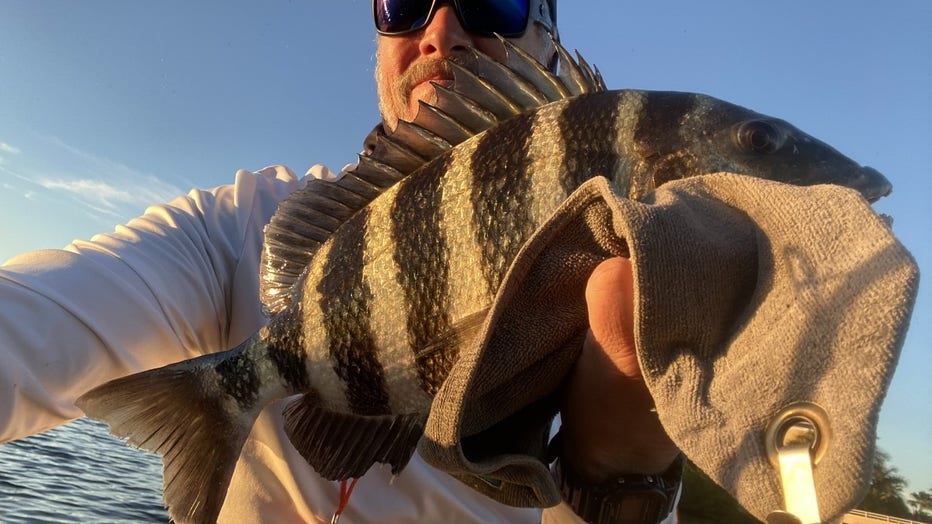
Sheepshead (Credit: Hubbard's Marina)
However, small pieces of shrimp and those fiddler or mangrove crabs are great options when targeting the sheepshead -- especially using lighter tackle like 15-20lb test and 1ot hooks with minimal weight.
Black drum also were more active feeding this past week around the local docks, piers, jetties, seawalls, oyster bars, and some flats. We see them most often on live shrimp or crabs, but you can sometimes see them on soft plastics. They are similar to sheepshead in the fact that the dirty, muddy, stirred-up conditions seem to turn them on feeding-wise. Back in the bay, we see them more, but we do see them in our passes and along our flats on the way to the passes from the bayous, creeks, rivers, and back bay areas.
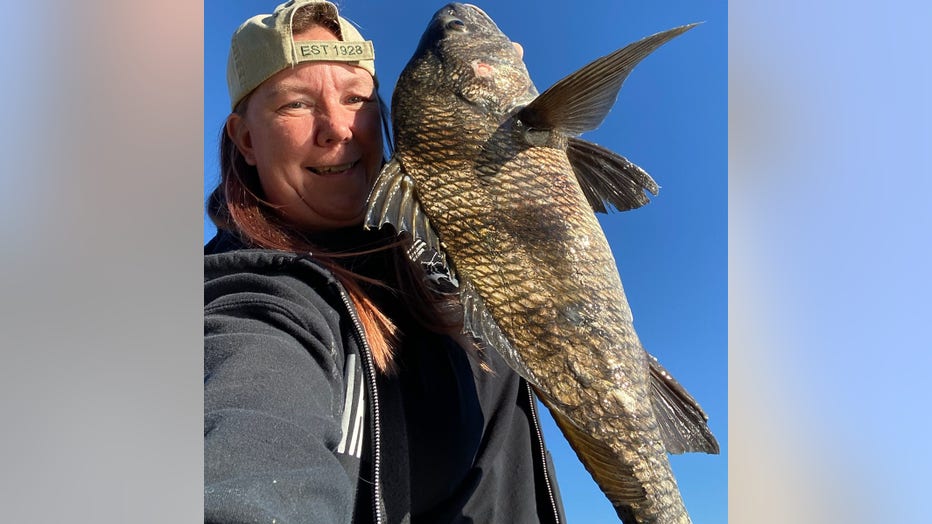
Black drum (Credit: Hubbard's Marina)
Snook action was happening, but you had to find those wind-protected shorelines with the deeper water pockets or potholes. Also, using the afternoon sun to warm up the back bay mud and finding those sunbaked coastlines for more actively feeding fish was a good option too. Slower-moving, soft plastics, swimbaits, and artificial shrimp were good options artificial lure-wise. However, live shrimp or whitebait has been a great option too!
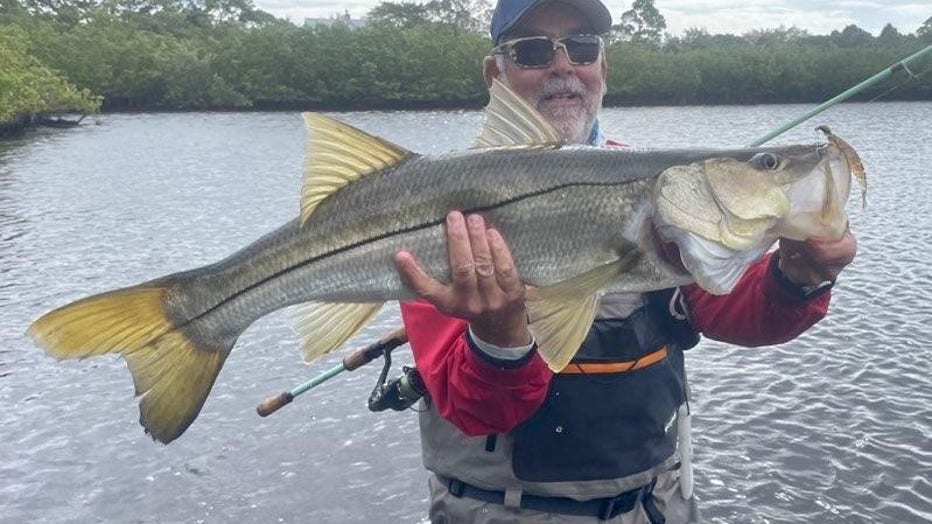
Snook (Credit: Hubbard's Marina)
Redfish were similar to the snook, feeding better on the flats in the afternoons when the sun was able to warm up the shallower flats, mangrove shorelines, and oyster bars. Also, those residential dock lines were good options, especially those close to the flats or mangroves where the redfish could stage and let the bait come to them. As the water cools, they become more and more opportunistic trying to move around less and less.
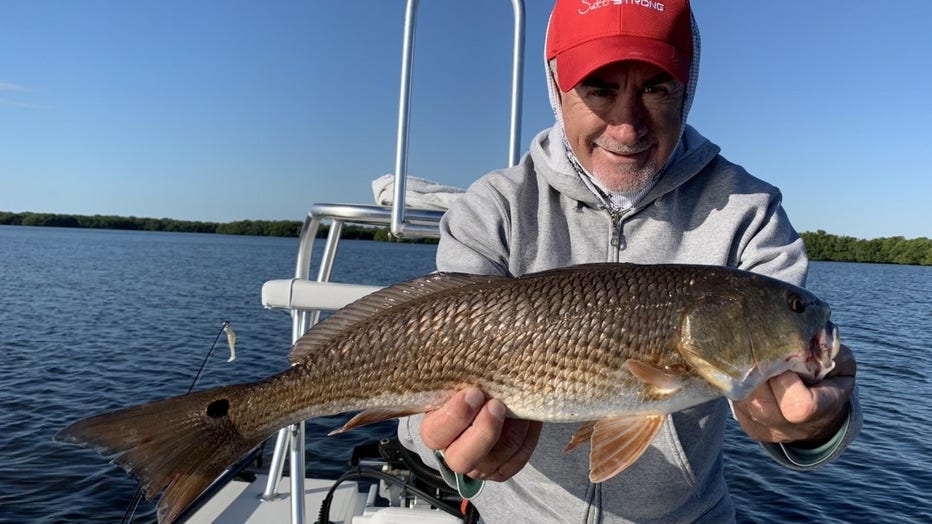
Redfish (Credit: Hubbard's Marina)
Trout action was steady around the area, but good numbers of fish are hard to find. Many local fishermen are concerned over trout numbers especially in some areas like Fort De Soto, but you are able to find them if you're fishing those edges, potholes, and cuts adjacent to the flats. Like redfish and snook, the slower soft plastics were king with the live shrimp as a great live bait option.
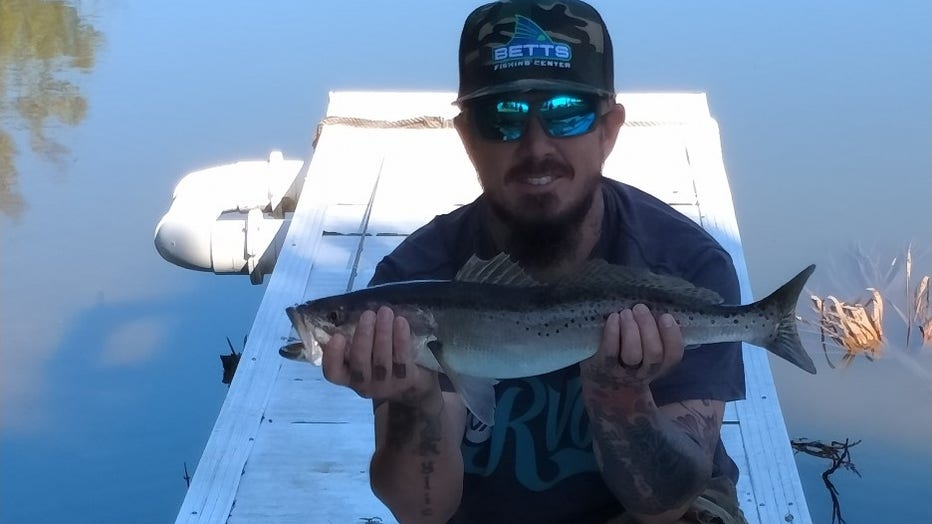
Trout (Credit: Hubbard's Marina)
Near shore
This past week was a tougher week near shore due to the extreme weather at the start of the week stirring up our waters. We really had to work for the fish, and fish as deep as possible to find some cooperative ones.
We saw waters stirred up as deep as 200 feet of water offshore, but the near shore waters just were completely milked out. The bite finally started getting better Tuesday but not until we reached 80-100 feet of water. However, with water never really clearing up. we had to fish beyond 60-70 feet all week to really get any decent action.
The mangrove snapper bite was good to us this past week, and that’s one good thing about more murky water conditions. It mimics that overcast cloudy or nighttime condition that the mangroves favor in their feeding behaviors.
We saw a more active mangrove snapper bite around 70-100 feet of water thanks to that stirred-up condition. They favored the cut threadfin on the double snell rig, or the live shrimp. Luckily, due to the stirred-up conditions, we were seeing them bite even heavier leaders in the 40-50lb range. Normally, we have to use 30lb or even less to get them chewing. With the dirtier water, you can get away with heavier leaders and still get these leader-shy fish to eat well.
Lane snapper were also feeding very well for us when we were able to get deeper to somewhat clearer conditions. The squid pieces, live shrimp and smaller chunks of threadfin were good options for lane snapper with around 30-40lb leaders and 3-4ot hooks.
Red grouper were tricky this past week near shore with the stirred-up conditions, and we didn’t see much of any red grouper feeding around near shore. However, offshore we were able to get them chewing but the stirred-up near shore conditions made it tough. Squid strips, threadfin, and live pinfish were good options.
Hogfish were tougher this week for us near shore too with bumpy conditions and stirred-up waters. It made it tough to target these guys. However, we did catch a few but had to use those live shrimp and really work to hold the bottom. Around the 40-60 feet range was the best option for the hogfish but that area was so stirred-up from the rough conditions it made it tricky.
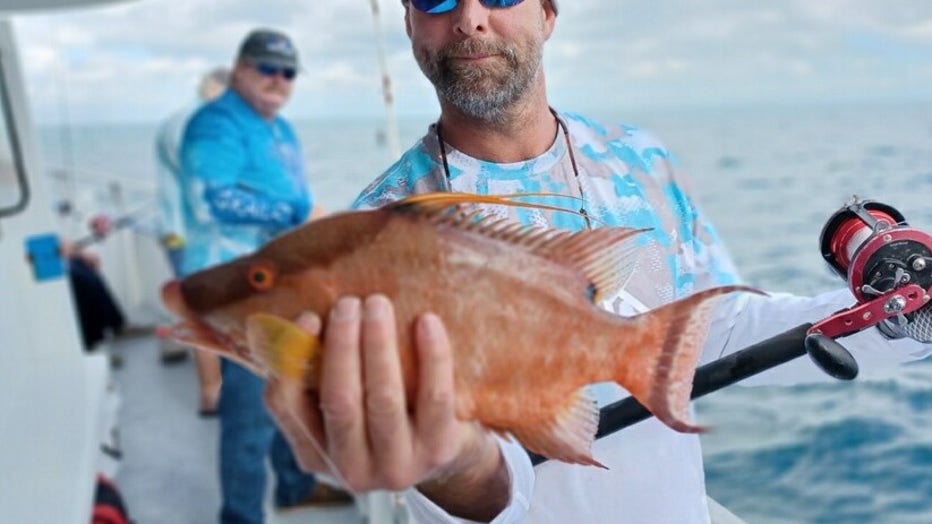
Hogfish (Credit: Hubbard's Marina)
Offshore
This was the first time in a very long time we saw even the deeper offshore waters get completely muddy from a cold front. However, the big front produced wave heights in the 15-18 feet range in our offshore waters early this past week. Those conditions were able to make our water even 150-200 feet of water resemble the 40-80 feet water quality.
Absolutely impressive weather conditions were produced from this last big front. Luckily our 44-hour trip was able to sneak out there prior to the big weather and they did really well with big mangrove snapper in good supply, nice red grouper in respectable numbers, a few nice scamp and plentiful vermillion, porgies, almacos, and even some yellowtail with a monster cobia surprise.
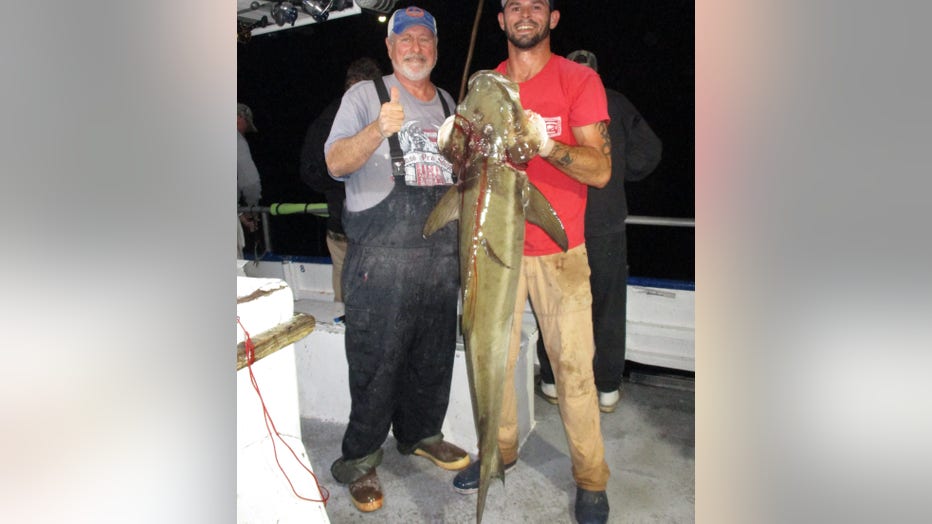
Cobia (Credit: Hubbard's Marina)
Then on the backside of this crazy weather we sent out a 39-hour trip and they did well too. Despite the stirred-up water, the mangroves were just frothing out there, ready to jump into the boat. We are seeing an incredibly large average-sized mangrove snapper right now offshore.
Plus, the red grouper bite improved a bit for us and we brought home nearly three dozen keeper red grouper! Also, the scamp too. We saw a good number of decent-sized scamp grouper on the threadfin and pinfish. Like the 44-hour, we had a good number of big vermillion, porgies, almacos, and some nice yellowtail snapper too. No pelagic action on the mid-week trip due the stirred-up conditions. However, once it clears and calms we should see a big resurgence in the pelagic action offshore.
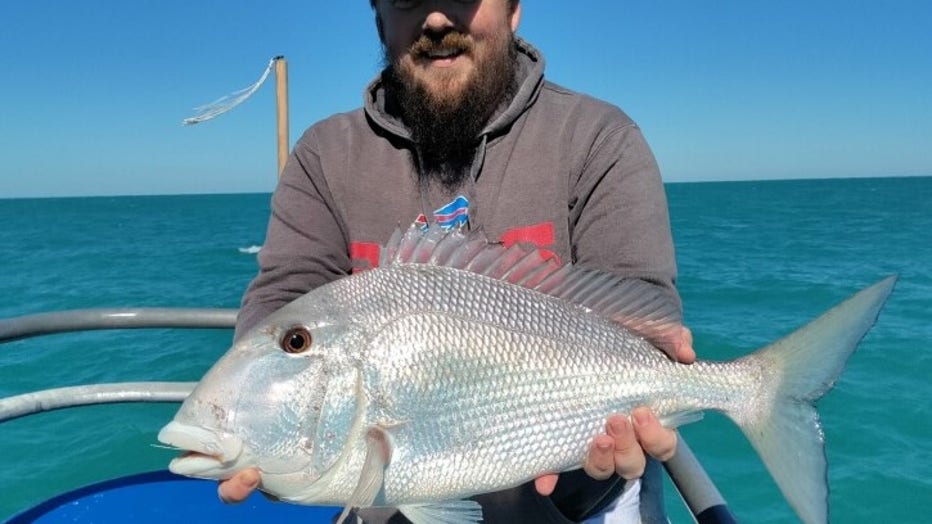
Porgy (Credit: Hubbard's Marina)
Don't be a fool; bring a venting tool and/or a descending device
It is so important to keep in mind the importance of dead discards and discard mortality when engaged in near shore or offshore fishing. If we can all work together to change the cultural norms near shore and offshore, we can all help to improve our fishery and our fishery access over time.
How many do you know right now that are all for catching and releasing snook, redfish, and trout but will be the first in line to kill a mangrove snapper, gag grouper or red snapper and the attitude completely changes when discussing these offshore species?
Plus, the same person inshore that will hold their breath and wet their hands before handling a breeder snook will go offshore and then cull through 20 red snappers before keeper their two red snapper they deem large enough to fill their two-fish bag limits while the other 18 they released will often end up suffering fatal damage if not properly descended or vented?
Please help us to spread the word on the importance of descending or venting your released fish. Descending devices are most easy to use and quick to pick up on their use and are most effective for most anglers. However, an expert and precise angler with proper training and tons of experience can use a venting tool properly with similar outcomes. However, a venting tool requires you to pierce the fish while most descending devices are much less invasive.
While using a venting tool it is imperative you pierce them in the exact right spot, and you do not go but a quarter-inch or less in the fish. Most venting tools require you to ‘choke up’ on the tool to prevent over-penetration into major organs.
When fishing deep water, especially in the sweltering summer months, please make sure to treat all fish intended to be released like that breeder snook inshore and minimize the time it takes you to get him from the bottom to the boat using heavier proper tackle not an ultra-light spinning reel. Then once onboard, minimize the time out of the water. Then use a proper dehooking tool, and then for the love of God, use a descending device or venting tool PROPERLY to ensure that fish has a chance to live another day.
Three things will help ensure the survivability of those fish released offshore.
- Making sure they are brought up quickly and do not expend all their energy in the fight.
- Make sure they are unhooked smoothly, easily, and as quickly as possible.
- Finally, make sure they spend the least amount of time at the surface at negative pressures where barotrauma exponentially increases its effect with each passing second.
Also, keep in mind when the water is warm there is less dissolved oxygen content, and the chances of barotrauma increase even more while its effects can be even more deadly.
CHECK OUT THE NEW WEBSITE and marketing campaign to get your own FREE descending device and more information on mitigating barotrauma and barotrauma issues! Do not forget to use the hashtag #ReturnEmRight to help spread the word too on fish you catch and release offshore -> https://returnemright.org/
State survey to improve recreational data and access
It is imperative that you have your gulf reef fish survey endorsement on your fishing license if you are a private recreational angler or diver fishing from a private boat anywhere in Florida who intends to harvest, attempt to harvest or possess one or more of the following reef fish species: mutton snapper, yellowtail snapper, hogfish, red snapper, vermilion snapper, gag grouper, red grouper, black grouper, greater amberjack, lesser amberjack, banded rudderfish, almaco jack, gray triggerfish, Gag grouper, Red grouper, Scamp grouper, Mangrove snapper, Lane snapper, Kingfish, Tuna, or Mahi mahi.
Here is all the information and more on that program and how you can sign up -> https://myfwc.com/fishing/saltwater/recreational/state-reef-fish-survey/
TERMS OF REFERENCE:
INSHORE – from the back bays out to the bridges and including right on the beaches
NEAR SHORE – From the beaches out to 20 miles, or up to 100ft of water
OFFSHORE – from 20 miles or 100ft and beyond
For more fishing reports, photos, videos and more check out Hubbard’s Marina on Facebook, Instagram, YouTube, or Snapchat. Just simply search "HubbardsMarina" and do not forget our family motto, "If you’re too busy to go fishing, you’re just too busy!

